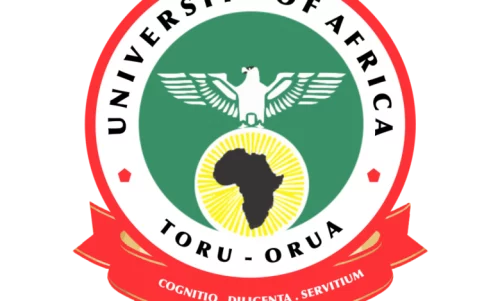CRS Keypoints: Mission of the disciples; The missions of the disciples, both the twelve and the seventy, are significant events in the life and ministry of Jesus Christ. As recorded in the Gospels, these missions involved specific instructions and objectives entrusted to the disciples.
CRS Keypoints: Mission of the disciples
In this detailed CRS article, we will explore the distinctions between the mission of the twelve and the seventy, examine the instructions given to the disciples, and assess the outcomes of their respective missions.
I. Distinguishing the Mission of the Twelve and the Seventy:
The missions of the twelve apostles (Mt. 10:5-15; Mk. 6:7-13; Lk. 9:1-6) and the seventy disciples (Lk. 10:1-24) were distinct in nature and purpose.
GAIN ADMISSION INTO ANY NIGERIAN UNIVERSITY WITHOUT JAMB – REGISTER FOR IJMB TODAY
The mission of the twelve
The twelve apostles were selected by Jesus to have a close and intimate association with Him. Their mission was primarily focused on the Jewish population. They were sent out to preach the message of repentance, perform miraculous healings, and cast out demons. Their primary objective was to prepare the way for Jesus’ ministry, as they proclaimed the arrival of the Kingdom of God.
The mission of the seventy:
The seventy disciples, also known as the seventy-two in some manuscripts, were appointed by Jesus to extend His ministry beyond the immediate twelve apostles. Their mission was broader in scope, encompassing both Jews and Gentiles. They were sent out in pairs to various towns and villages, carrying the message of peace and the Kingdom of God. Like the twelve, they were also empowered to heal the sick and cast out demons.
Study Other CRS Keypoints Here
II. Specifying the Instructions to the Disciples:
Both the twelve and the seventy received specific instructions from Jesus regarding their missions.
Instructions to the twelve:
Jesus instructed the twelve apostles to go only to the lost sheep of Israel, avoiding the Gentiles and Samaritans. They were instructed not to take any provisions with them but to rely on the hospitality of those they encountered. Jesus provided them with guidelines on how to conduct themselves, including being wise as serpents and innocent as doves, and warned them about potential persecution and rejection.
Instructions to the seventy:
The seventy disciples were given similar instructions but with some variations. Unlike the twelve, they were instructed to go to every town and place where Jesus Himself was about to go, spreading the message of peace and healing. They were told to carry neither money bag, knapsack, nor sandals, relying on the hospitality they received. Jesus warned them about potential rejection and instructed them to shake the dust off their feet as a testimony against those who refused to listen.
Study Other CRS Keypoints Here
III. Assessing the Outcomes of the Missions:
The missions of both the twelve and the seventy yielded significant outcomes.
Outcomes of the Twelve’s mission:
The twelve apostles faithfully carried out their mission, proclaiming the message of repentance and performing miraculous signs. They successfully healed the sick, cast out demons, and stirred the attention and curiosity of the people. Their mission prepared the way for Jesus’ ministry, gathering followers and raising awareness about the Kingdom of God.
Outcomes of the seventy’s mission:
The seventy disciples also returned with joy, sharing their experiences with Jesus. They rejoiced in the authority given to them to heal the sick and cast out demons. Their mission expanded the reach of Jesus’ ministry, sowing seeds of faith in various towns and villages. They experienced success and witnessed the power of God at work through them.
Conclusion:
The missions of the disciples, both the twelve and the seventy, played a vital role in spreading the message of Jesus Christ and preparing the way for His ministry. While the twelve focused primarily on the Jewish population, the seventh extended the reach of Jesus’ teachings to a wider audience.
The instructions provided to the disciples guided their conduct and reliance on God’s provision. Through their missions, they witnessed remarkable outcomes, including the healing of the sick, the casting out of demons, and the establishment of faith communities. The missions of the disciples serve as a testament to their obedience, faith, and the transformative power of the message they carried.
FAQ
Q1: Who were the twelve apostles and the seventy disciples?
A1: The twelve apostles were a group of individuals chosen by Jesus to be His closest associates and witnesses of His ministry. They include well-known figures such as Peter, James, John, and Matthew. The seventy disciples, also referred to as the seventy-two in some manuscripts, were a larger group of individuals selected by Jesus to extend His ministry beyond the immediate twelve apostles.
Q2: What was the purpose of the missions of the twelve and the seventy?
A2: The missions of the twelve apostles and the seventy disciples aimed to spread the message of Jesus, proclaim the arrival of the Kingdom of God, and prepare the way for His ministry. The twelve were primarily focused on the Jewish population, while the seventy had a broader scope that encompassed both Jews and Gentiles.
Q3: What were the instructions given to the disciples for their missions?
A3: The disciples, both the twelve and the seventy, received specific instructions from Jesus. They were instructed to rely on God’s provision and hospitality, to proclaim the message of repentance and the Kingdom of God, and to perform miraculous healings and cast out demons. They were also warned about potential persecution and rejection.
Q4: How did the missions of the twelve and the seventy differ?
A4: The missions of the twelve apostles and the seventy disciples had some distinctions. The twelve focused primarily on the Jewish population and were instructed not to go to the Gentiles or Samaritans. The seventy, on the other hand, had a broader mission that extended to both Jews and Gentiles. Additionally, the twelve were sent to prepare the way for Jesus’ ministry, while the seventy were to accompany Jesus as He visited different towns and places.
GAIN ADMISSION INTO ANY NIGERIAN UNIVERSITY WITHOUT JAMB – REGISTER FOR IJMB TODAY
Q5: What were the outcomes of the missions of the disciples?
A5: The missions of the twelve and the seventy yielded positive outcomes. Both groups witnessed the power of God at work through them as they healed the sick and cast out demons. They spread the message of Jesus, prepared the way for His ministry, and established faith communities in various towns and villages. The disciples returned with joy, rejoicing in their accomplishments and the authority given to them.
Q6: What can we learn from the missions of the disciples?
A6: The missions of the disciples teach us about obedience, faith, and reliance on God’s provision. They demonstrate the transformative power of the message of Jesus and the impact that can be made through faithful proclamation and acts of compassion. The disciples’ experiences inspire us to carry the message of Jesus in our own lives and to trust in God’s guidance and provision.
Study Other CRS Keypoints Here
Q7: How can we apply the lessons from the missions of the disciples in our own lives?
A7: We can apply the lessons from the missions of the disciples by being obedient to the teachings of Jesus, sharing the message of the Kingdom of God with others, and relying on God’s provision in our lives. We can also learn from their faith and perseverance in the face of challenges and rejection, and strive to carry the transformative power of Jesus’ message in our interactions with others.












